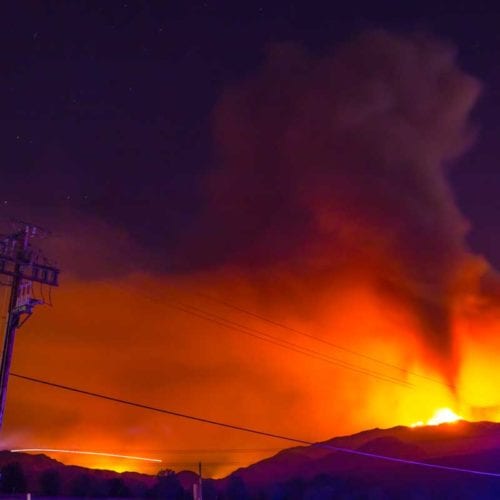
eLab Accelerator 2019
DERs for Wildfire Resilience

Project Objective
Our project's focus will be on using DERs to provide resilience in fire-prone regions. Our objective is to reduce customer impact from outages, whether we're serving proactive safety, during a disaster, or after a disaster when infrastructure will take time to repair. We will design an effective demonstration project, which should ultimately lead to scalable solutions.
Meeting this objective will require reviewing factors or communities, utilities, and ratepayers facing an increasing risk of wildfire impact. For each stakeholder, we will identify (1) their needs and challenges, and (2) the benefits that distributed energy resources (DERs) can provide.
Pilot projects will be designed to serve the needs in across multiple states. Projects will address identified needs and measure DER benefits, and identify priority actions necessary to implement both pilot projects and deployment of DERs to reduce wildfire impacts at scale.

Team Members
- Smriti Mishra, Principal Manager of Strategic Partnerships, National Grid Ventures
- Colin Law, Director, Sunrun
- Richard Skaff, Executive Director, Designing Accessible Communities
- Neal Bartek, Project Director - Microgrids, ENGIE Services, U.S.
- Ted Herman, Associate, Southern California Edison
- Cody O’Neil, VP of Operations, Holy Cross Energy
Project Description
Extreme weather events are becoming increasingly common and destructive. Over the past 40 years, fire seasons have grown significantly longer and large fires are five times more common than they used to be. Higher temperatures and prolonged dry weather are testing our existing energy infrastructure and threatening our environment. Today’s electric grid is energized by high-voltage power lines that deliver electricity across long distances from centralized power plants—many of which exacerbate climate change by burning fossil fuels.
Local, distributed energy resources (DERs), such as home solar and batteries, can provide more resilient energy solutions in high-risk fire areas. DERs can be used to reduce the impacts of outages caused by wildfire risk for homes, businesses, critical facilities, and utilities, and provide valuable services in blue-sky daily operation.
This team has been formed to develop models for pilot projects and scalable business models that use DERs to reduce the impacts of wildfires, with a focus on utility service territories in California and Colorado—regions with acute wildfire risk. This project is an opportunity to learn how to standardize best practices and create a blueprint for DERs that can help the most people, as quickly as possible, across regions.
Progress Made to Date (pre-Accelerator)
To date, Sunrun has written a white paper on applying DERs to reduce wildfire hazards, and has engaged with several academic institutions to inform research on next steps. Utility participants Holy Cross Energy and Southern California Edison have also started exploring the potential for DERs to reduce wildfire impacts in their service territories. Holy Cross Energy, for example, has begun a stakeholder process with RMI to assess options for reducing wildfire risk.